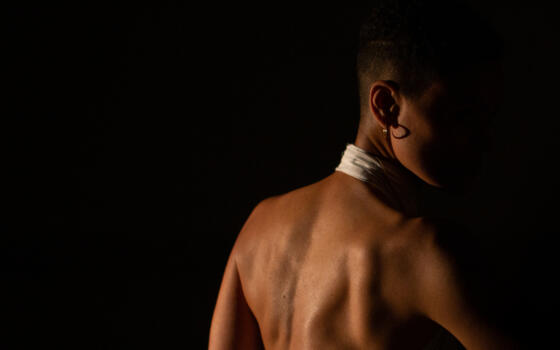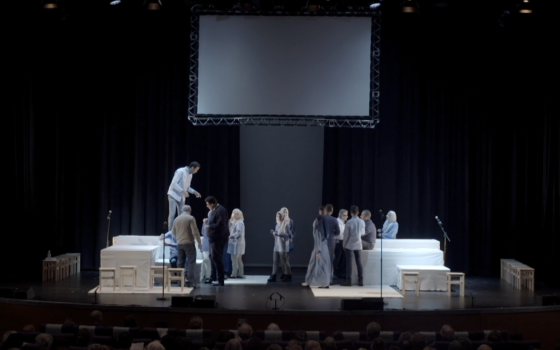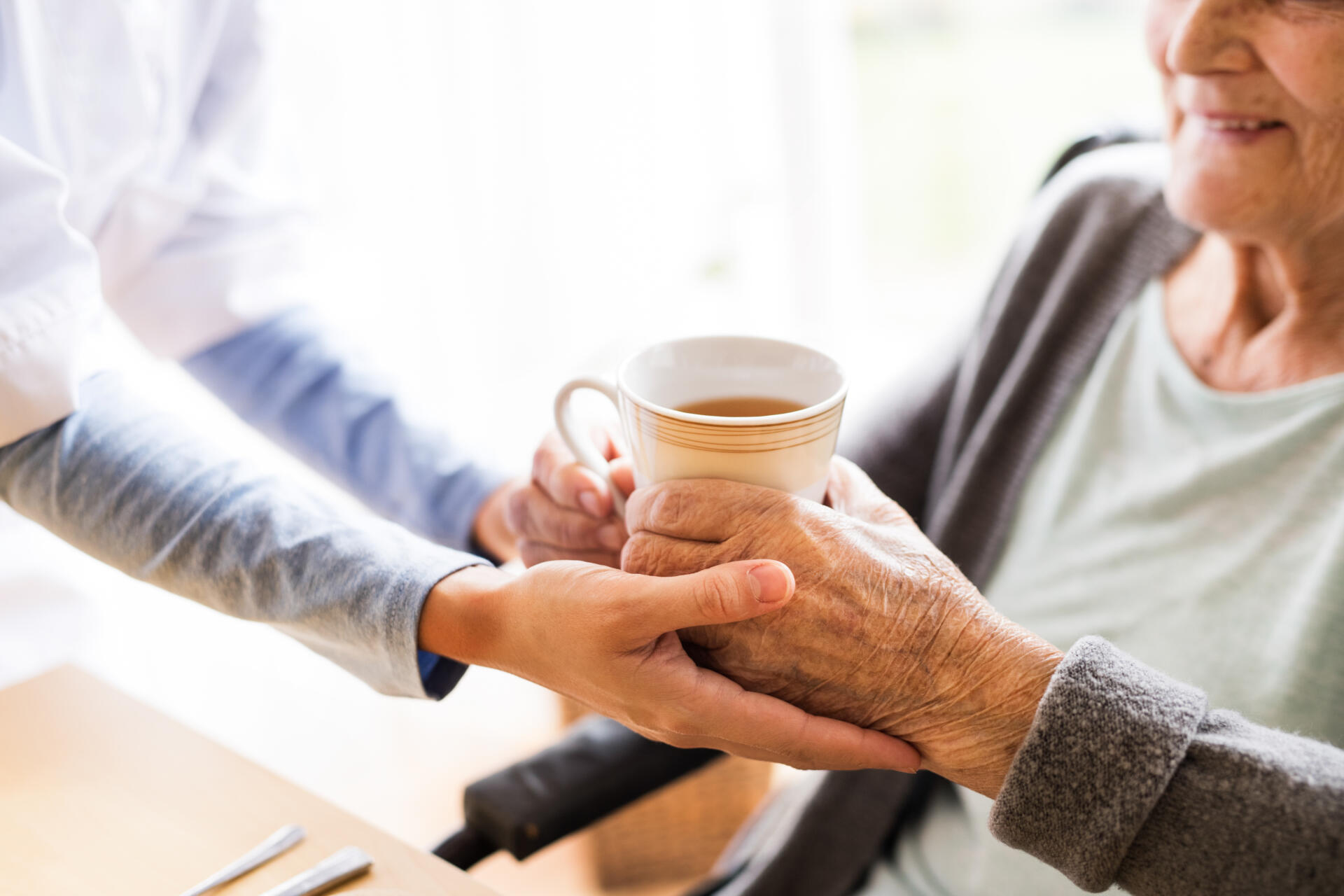Holding/ Holding On
An article for the Post-Covid-19 Futures Commission authored by Nicola McCartney
On 30th June the National Theatre of Scotland (NTS) launched two films on the theme of Care in Contemporary Scotland. Following a call-out process in 2020, NTS commissioned two creative practitioners, myself and Lucy Gaizely/21Common to undertake a six-month project to positively imagine the impact that creative arts can make within a care context across Scotland. As part of the project Lucy Gaizely/ 21 Common was working with learning-disabled adults to create a new experimental documentary: Non Optimum: When It’s Safe To Do So addressing personal experiences of care and access to services during the pandemic.
I engaged with care experienced adults and young people, and those who care for them in a two-part project. The first part has been a listening project. Since October 2020 I met with various adults and young people on a weekly or bi-weekly basis to hear their stories of the Care system in Scotland, either as a child/ young person or as an adult looking after young people within the system.
As a playwright and socially engaged theatre-maker, becoming an ‘active listener’ has played a key part in my creative practice in the last decade. Active listening is listening with the whole body, opening oneself not just to the words of the speaker but to the emotions and the energy underlying them. This process has been informed by an interest in the work of the German social psychologist Erich Fromm – especially his book ‘The Art of Listening’. In this text, he argues that listening is an art form, like poetry, which has its own rules. This idea really gripped me. He offers six guidelines for being unselfish in listening:
-
The basic rule for practicing this art is the complete concentration of the listener.
-
Nothing of importance must be on his mind, he must be optimally free from anxiety as well as from greed.
-
He must possess a freely-working imagination which is sufficiently concrete to be expressed in words.
-
He must be endowed with a capacity for empathy with another person and strong enough to feel the experience of the other as if it were his own.
-
The condition for such empathy is a crucial facet of the capacity for love. To understand another means to love him — not in the erotic sense but in the sense of reaching out to him and of overcoming the fear of losing oneself.
-
Understanding and loving are inseparable. If they are separate, it is a cerebral process and the door to essential understanding remains closed.
I think I am more of a talker than a listener, full of my own ideas and opinions. I am also mindful that I am as defensive as any other human being can be, possibly more so. I love to engage in debate and arguments about all sorts of things, and this continues to take hard work and practice. Our world seems no longer built for taking the time to listen to other people, their life stories, experiences and ideas. It’s become a cliché now to say that the age of social media has created a world in which everyone is always “on broadcast, never on receive” and yet so many human beings of all races, classes and genders seem to agree on one thing: no one feels listened to. Almost everyone feels silenced, overlooked, forgotten. And coupled with this, it seems there is also an increasing fear to speak lest one is shot down, mocked, or worse still, threatened with violence or death.t Everyone wants to be heard but fewer it seems are willing to do the hard work of listening to another person.
My obsession with learning to listen, and its relationship to my work as a playwright, was sparked almost 25 years ago.
I first started leading the Traverse Theatre flagship engagement project, Class Act, in schools and across the world: a key part of encouraging others to write is your ability to listen to them and their work. But my conscious integration of it as part of my practice didn’t take full form until around 7 years ago when I was resident for two years at Rachel’s House, a recovery project for women leaving the criminal justice system, run by Lower Lights Ministries, in Franklinton, Columbus, Ohio. I worked with a group of eight women who were participating in the programme across two years. What was revelatory to me was that although I was the person supposedly leading this project to help women tell their life stories and help them to put some of their experiences and fragmented sense of their narrative identities into order, it was me who found the process more healing and transformative than they did, perhaps.
This is the thing about listening: it doesn’t just benefit the person who is being listened to, but the listener also.
The difficult process of giving another person your full attention, time and emotional openness doesn’t just help you understand them, but yourself also. And a continual practice of listening to other people begins to help you form a broader understanding of the world as you gather all these pieces of other people’s lives and begin to see patterns and shapes emerge in the world around you. As a good friend once said to me: “there’s no such thing as altruism, Nic.” And I think I believe her – when looking to the true good of others one is almost always simultaneously doing good to oneself. This is not the orthodoxy in contemporary society, however.
My interest in the Care system for children and young people goes back many years also. I was a panel member for The Children’s Hearings system in Scotland for five years before becoming a foster carer for Glasgow City Council 15 years ago. My experience as a foster carer was pretty rough; not only did I feel abused within it but I witnessed many of the young people I cared for getting a much less than perfect standard of care from their ‘corporate parents’.
My abiding sense was and remains that what we have in the UK is a Care system which has no care in it.
Then came the publication of the Scottish Government’s ‘The Promise’ in 2020, the result of the Independent Care Review which had run for many months and consulted children, young people and others with experience of the system. Its main findings seemed to chime with my own impressions of how we look after our most vulnerable children in Scotland.
The first part of my creative enquiry has been a listening project. Care experienced people report that their voices are often not heard within the system and the Independent Care Review bore this out; but my own experience and observations of those who look after children and young people in the system is that they often feel alienated by the system too. So I wanted to listen to a range of voices and hear their experiences. As a pilot project the numbers had to be limited to between 10 to 20 community collaborators. In the end I worked with 17 people in different ways.

The basic pattern was to meet weekly or bi-weekly for one to two hours and listen to each individual’s stories on zoom. I have listened to the stories of care-experienced young people, foster carers, social workers (both senior and new), Children’s Hearings Panel members, residential care workers, voluntary sector workers, educationalists, Independent Care Review members and voluntary sector workers.
I am always led by what the speaker wants to talk about whenever I do this work. And there are huge ethical considerations. One has to be very careful not to force anything, to be mindful that a person may be carrying significant trauma and to have a trauma-informed practice. There is of course iron-clad confidentiality. Training in counselling and de-escalation techniques is necessary, I think, so as to ensure one cares for the storyteller properly.
I liken my relationship to those with whom I work with like a dance: they are the leader and I have to follow their steps, only moving into spaces they open for me, and sensing if I need to go around those spaces and leave them open rather than step in, if stepping in might trigger pain.
They are in control and I have to remind them of this constantly. Consequently, each person has come into every session with a clear idea of what they want to speak about or what they want to explore. I hold space for them to speak, ‘hold’ their stories for them over weeks and months, and I hope, I make them feel ‘held’ as I listen. We have had to conduct all of this remotely over digital platforms due to the pandemic. This has been difficult: listening with the whole body and establishing trust is much easier in person. On the other hand, with each person speaking from the safety and comfort of their own homes, perhaps this has made them more willing to open up?

I also had to be conscious of my own prejudices and opinions through being a foster carer myself.
It would be foolish to think I lay these things aside. Sometimes I shared those, maybe sometimes too much. I recorded each session and then began to transcribe each person’s story. The best way to do this kind of work is to allow the speaker to have a full written transcript of their story back and have time to reflect on it before moving on. On this particular project, this process had to change due to timing, but each collaborator has had a say in if they want to share (some have not) and how they want their story to be told.
The second part of the project is a filmed reading of a set of responses to the listening project. I have woven together a verbatim piece Holding/ Holding On, out of the stories of those who wanted to share their voices in this way. The theme of love is strong in this, but what was more dominant was the theme of poverty and how it is mostly the children of the poor who are removed from their families, and why. Three collaborators have chosen to contribute artistically themselves. Kenneth Joseph Murray, a care-experienced young man, and an emerging screenwriter has worked with me on a pilot TV drama series called The Close, based on his experiences of growing up in poverty in Glasgow’s East End. Charlotte Armitage, a care-experienced young woman and academic, is presenting a provocation as to why Scotland’s care system works in this way, and Murdoch Rodgers (until recently a Children’s Hearings panellist) has taken a series of powerful photographs around the theme of love. All of these are part of the film.
What has been especially brilliant about working like this is that this project has been able to be what it needs to be, and not, as many arts engagement projects are, driven by the ego of the organisation or its funders. Too often arts projects are tied up in red tape around these things and don’t centre the people who the project is supposed to be for. I am reminded here of the academic Helen Nicholson’s cautionary words in her introduction to Applied Theatre, that when seeking to make work which is for the ‘good’ of communities, it’s always important to ask “whose idea of good is it” and “whose good is it for”?
What do the collaborators get out of it?
Although I am not in any way a therapist and don’t claim to be, I know that there can be therapeutic benefits to artistic interventions of this kind. In these types of projects it’s the listening that makes the difference. I have seen the positive results of the simple act of being listened to on people’s lives. The main thing is it affects their sense of narrative identity – the story we tell to ourselves about ourselves – and this has a direct relationship to an individual’s mental health. Holding space for someone to think about their personal story, reflect upon, and put it into order can be life changing.
I am still waiting to hear from many of my community collaborators on this project about what exactly this work has meant to them. One young social worker who participated with me in the work said that our weekly chats were “space for her to think about what she does, why she does it and why she makes the decisions she makes”, a space which doesn’t exist for her day to day in her highly pressured job. This is what the Care system needs – spaces which are built to hold people – to hear the voices of those who are cared for, and to give those workers a space to think, reflect and be heard too. If a child or young person is to feel cared for, so must the staff who look after them, and this can only be done within a system which is about care itself. Scotland needs to care for the carers and the cared for. It’s my impression we are a long way off from that yet. But at least with The Promise, the Scottish government has made a pledge to change things; to transform a system which is about protection into a system which has love at its core.
As we emerge (we hope) into the world of post-Covid-19, the challenge to artists and art forms is to find ways of holding space for people and their stories in ways which might contribute to their good, and not be driven by our own egos, incomes, or that of the organisations who stage them or who fund work like this. My own personal challenge, both as an artist and a human being, is to keep practicing how to listen in the hope one day I learn how to.
Project Information: NTS presents Care in Contemporary Scotland – A Creative Enquiry two new films exploring Scotland’s care system.
Holding/Holding On by Nicola McCartney
Non Optimum: When It’s Safe To Do So by Lucy Gaizely/21 Common
Supported by: Scottish Power Foundation, Rayne Foundation, John Mathers Trust, Hugh Fraser Trust, Scottish Children’s Lottery






